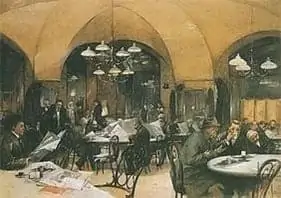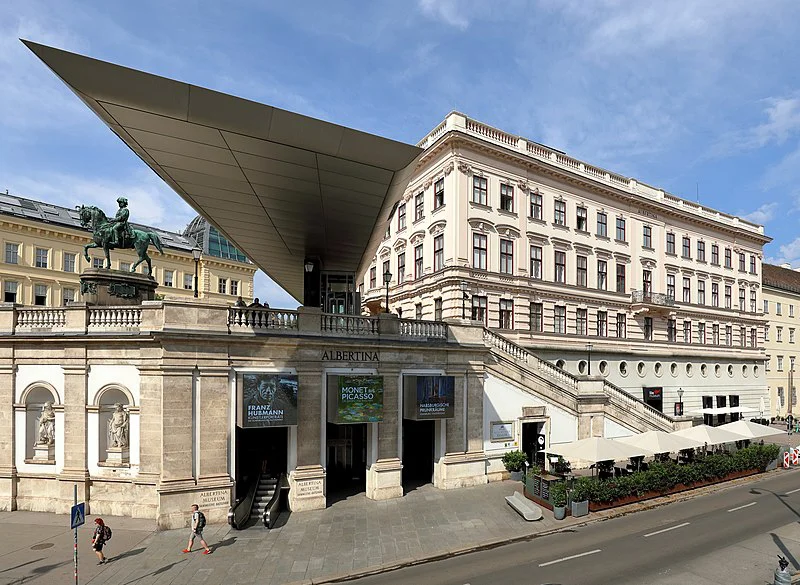Why is the Viennese coffee house so important to the Viennese? When and where was the first Viennese coffee house opened? From when did women have access to the coffee houses in Vienna?
Vienna was not the first city to have a coffee house, but nowadays Viennese coffee houses offer a wide range of different coffee specialties . You get to know the Viennese Gemütlichkeit only in the coffee houses with a Melange and Sachertorte . The first coffee houses existed in Mecca as early as the 12th century, followed by Venice. In Vienna it was not until 1683 and this has to do with the second Turkish siege . Franz Kolschitzky sneaked through the enemy camps as a spy to convey an important message to Charles of Lorraine. In gratitude for his heroic deed, he received the spoils of war from the Turks . Among them were sacks of mysterious dark beans. The Viennese initially thought it was camel food . When the beans began to be roasted , the first Viennese coffee house was created.
This is the legend that has persisted for centuries. In reality, the first Viennese coffee house was opened on January 17, 1685 by the Armenian Johannes Deodat (Diodato) in his house on Haarmarkt, today’s Rotenturmstraße 14.
Around 1720, Kramer’s coffee house on Graben was the first to publish newspapers and attract people to read them. Towards the end of the 18th century the first Vienna Concert Café followed, which was enthusiastically received by the Viennese. Now you could enjoy the live music of Mozart, Beethoven and later Strauss & Co with your coffee. The coffee houses were full and the composers became famous. During the Vormärz and Biedermeier periods, the Viennese coffee house became a model throughout Europe. Cities such as Prague, Venice and Trieste imitated the Viennese coffee house. In 1856, women were allowed into the Viennese coffee house. Before that, it was only the seat cashier that you could find in the coffee house. One wanted to protect the woman from the wicked ambience including gambling, alcohol and cigarette smoke. The typical Thonet coffee chair No. 24 was made around 1850 and stood next to the small marble table. To this day, traditional Viennese coffee houses prefer this arrangement. Coffee house literature emerged in Cafe Griensteidl around 1900, and literary figures such as Hugo von Hoffmansthal, Karl Kraus and Arthur Schnitzler are just a few of the great names who founded this development. The “extended living room” was heavily used. Along the Ringstrasse there were about 30 coffee houses. Viennese society strolled and promenaded along the Ring and in the cafés. Incidentally, the word coffee comes from Arabic and refers to the Kaffa region in Ethiopia, where the coffee tree has been growing since ancient times. Another special feature is that Vienna’s coffeehouse culture was designated an intangible cultural heritage by UNESCO in 2011. So the next time you visit a coffee house, remember that enjoying your coffee in peace is an act of culture Time Travel Tip: When you visit a Viennese coffee house, you will usually find at least ten to twenty different coffee specialties on the menu. In total, there are about forty different types of coffee in Vienna. The most common drink is the Viennese Melange , comparable to a cappuccino, but with more milk. Image source: https://commons.wikimedia.org/wiki/File:Cafe-Griensteidl-1896.jpg?uselang=de



